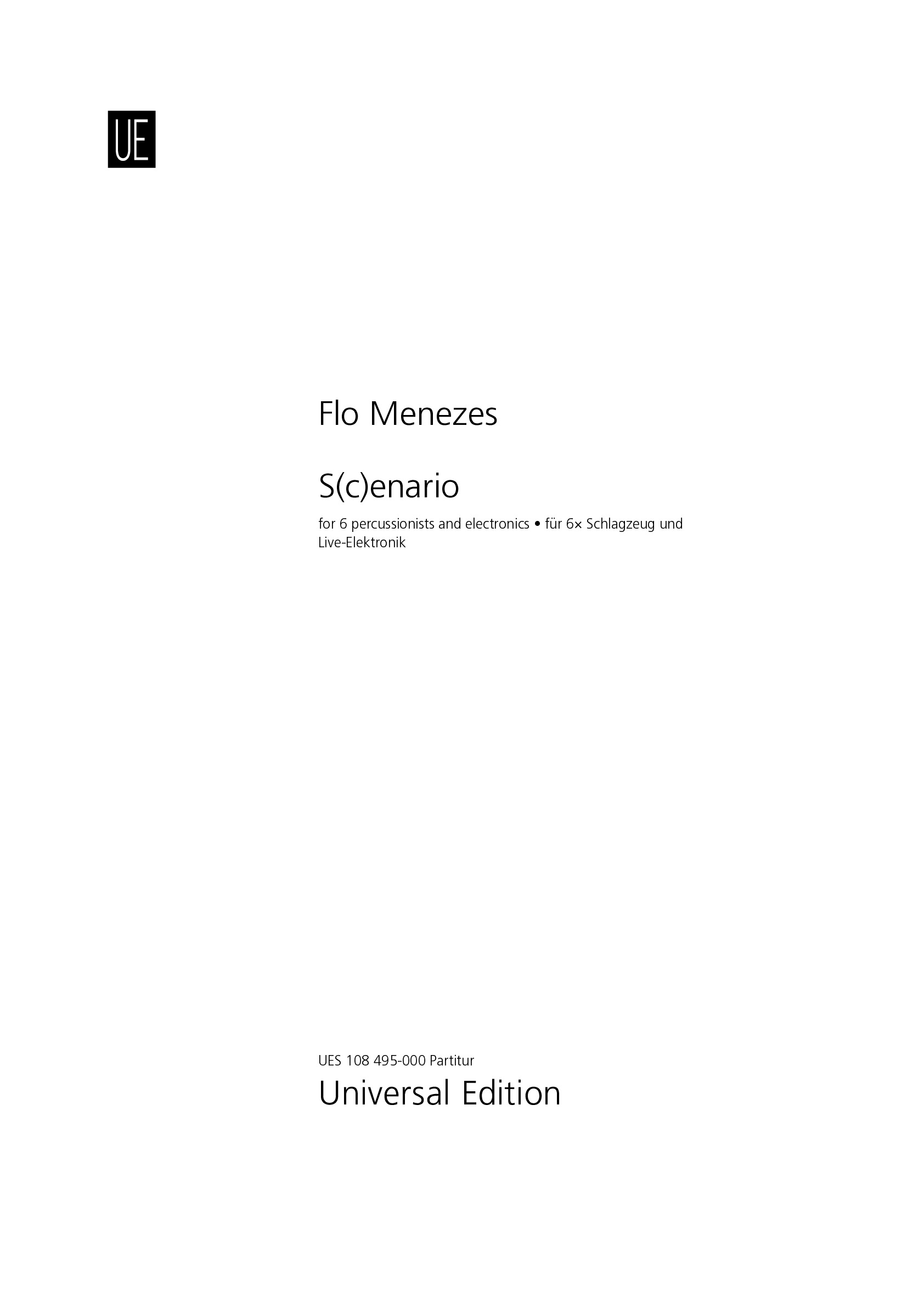.png)
Digital edition
immediately available as PDF
€41.95
Payments:
Shipping:
Flo Menezes
S(c)enario, for 6 percussionists and electronics
UES108495-000
Type: Dirigierpartitur
Format: 297 x 420 mm
Pages: 74
Digital edition
immediately available as PDF
€41.95
Payments:
Shipping:
Audio preview
Description
The origin of S(c)enario
The composition S(c)enario (Italian for Scenario, but also referring to the Italian word Senario) was conceived and written as a commission by the ensemble Les Percussions de Strasbourg between October 2011 and March 2012 for 6 percussionists and electronics (in real time and differed time), and its electroacoustic realization was carried out at the Studio PANaroma de Música Eletroacústica of the State University of São Paulo (Unesp). The commission was prompted by the 50th anniversary of this French ensemble in 2012, which coincided with my own 50th birthday (completed on 18 April 2012). In 2016, on the occasion of the work's world premiere, the commission was also linked to the Experimentalstudio des SWR, Freiburg, Germany.
Because of the circumstances, the score was written in French.
Structured in 6 parts, called Situations (as in many of my works), the work unfolds from the “scenes” of theatrical music (not musical theatre), in which the action of the musicians is of fundamental importance to its sonic and dramatic realization. As in other compositions that preceded S(c)enario, the music “surrounds”, so to speak, the listener's space, either through electroacoustic diffusion (at least quadraphonic) around the audience, or through the movements of the musicians on stage: the beginning and the end of the work occupy the entire space of the theatre where it is performed; the musicians arrive at the beginning and leave at the end by different routes through the entire space of the theatre, and the beginning of the music should surprise the listeners, who suddenly find themselves surrounded by sound, without realizing that the work was just beginning.
The “theatrical” aspect of S(c)enario is also revealed by the “scenario” in which the piece is played on stage: there are 6 Positions (from A to F), each with a certain number of instruments, but the 6 percussionists move during the piece and change locations, playing in various Positions according to the Situation. Position A is the only one whose instruments are subjected to electroacoustic processing in real time, and its location is not only central on the stage (on the scenario), but also higher than the other Positions.
Also conceived as a kind of “self-gift”, Positions B to F form a large M (de Menezes) on the stage, whose center is occupied precisely by Position A. All this “scenario” obviously motivated the work's title, but the choice for Italian (thus S(c)enario - /?e?nario/ - without accent on “e” and with the option of omitting the “c” and the resulting alteration of pronunciation: Senario - /se?nario/) also refers to Zarlino's “Numero Senario”, 6 (the number of percussionists in the Percussions de Strasbourg), whose importance is almost mystical for this music theorist. Among several arguments in favor of “6” as the most important number, Zarlino mentions, in his seminal work Le Istitutioni Harmoniche (1558), specifically in Chapter 14 of Part One, dedicated to the number Senario (“Che dal numero Senario si comprendeno molte cose della natura & dell'arte”), Plato's description of space: “And six, according to Plato, are the different places, or positions; Above, Below, Front, Back, Right, & Left.”. We can see that this description was crucial to the choice of instrument layout for the 6 Positions in S(c)enario. Moreover, Position A - the only one in which the instruments are subjected to electroacoustic processing in real time - refers in some way to a kind of sacred place, as in the case of a church altar in a ritual.
More information
Type: Dirigierpartitur
Format: 297 x 420 mm
Pages: 74

